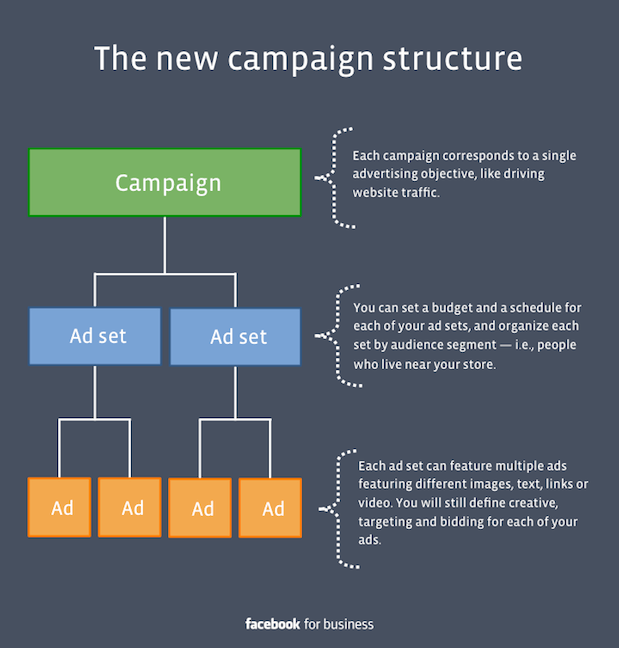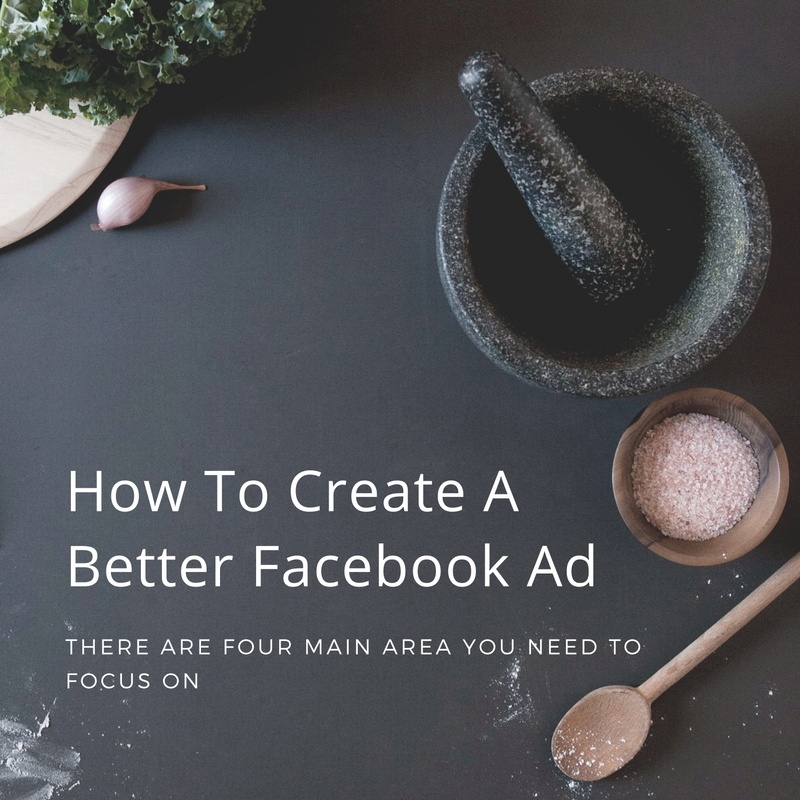How do you create the perfect ad?
Well, there isn’t such a thing.
There are are ads that work really well. And ads that convert. And ads that spread your message well.
But you need to understand there is no one perfect ad (no matter what those Ad Blueprint downloads keep spruiking).
Before you publish your ad, you aren’t going to know which ad will hit the ball out of the park and which will tank – this is where testing comes in (but I will talk about that later in this blog post).
So, how do you create an ad that works for your business?
Well, there are four main area you need to focus on:
- Targeting
- Creating your ad for your target audience
- Testing
- Landing page
But let’s jump into it.
Targeting
When creating your ad, the number one thing you need to keep in mind is who you are writing it for. That is, who you are targeting it to.
There is a very good reason Facebook makes you select your targeting first, before creating your ad.
And why it is SO important to make sure your targeting is tight.
Don’t target 200,000 people with a generic ad, when you could target 2,000 with a well written ad that speaks directly to those people.
Leave mass messaging to mainstream media and corporations who (for some reason) love to waste money on TV advertising.
You are a small business and you need to use Facebook to target the right amount of people with your ad, and no more.
So, next time you write an ad, ask yourself “who will be reading this?” and “What do they want to hear?”
One question I get asked a lot when I talk about this is “how big should my audience be?”
Unfortunately, there is no hard and fast answer to this.
It will depend a lot on who you are targeting, who you want to reach, how big (or small) your customer base is, and what you are advertising.
What you really need to think about when choosing the size of your target audience is whether this group of people all share enough that is similar they can be reached with a specific message.
Will the message you will write in the ad be understood and resonate with the target audience.
If the answer is no, then it may be time to re-visit your targeting.
Does this help clarify what you need to do with targeting? Let me know if the comments below.
Ad Creation
Targeting is just one side of a two-sided coin.
Once you have your tightly targeted audience you need to write an ad that is directed at that same audience.
There is no point coming up with the perfectly targeted audience and then creating a generic ad that doesn’t “speak” directly to them.
Think about your target audience as though they are real, living people (because they are) and write an ad that will resonate with them.
This may seem logical, but not many people do this.
(This is also why having a visual representation of your ideal customer is so important – it allows you to easily see who you are writing your ad for).
So forget about generic ads and focus on the issues, desires, and emotions of your target audience.
Your goal is to write an ad that resonates with that audience.
This will, in turn, capture their attention and compel them to take action.
Do you write ads with your target audience in mind? Let me know in the comments below.
Test. Test. Test.
Once you have your target audience and your ad written, it is time to publish it.
But what happens if it falls flat or doesn’t do as well as you think it will? What then?
Well, you should never launch a campaign with just one ad – you need to come up with a few variations of your ad so you can see what works well, and then create more of that.
There are two basic ways you can test which ad is best:
- Test several versions of the ad to see which works better
- Use several images in each ad to test which works better
When creating an ad you should always follow the Facebook ad structure (see image below), which contains three levels – campaign, ad set, and ads.

The good news is, Ads Manager does a pretty good job of walking you through these three levels as you create your ad.
You start with the campaign level by choosing your objective and naming your campaign.
Then, in the ad set level, you choose your target audience, set your budget, and configure your options.
Then, finally, in the ad level you create your ads.
When creating your ads, create 3-4 variations of the same ad in each ad set.
For example, if your campaign is to sell sports shoes, and one of your ad sets was for a particular running shoe (one of your best sellers) you could create 3-4 variations of the ad for that particular shoe.
Now comes the next part – testing various images.
How to Test Images
Facebook allows you to add up to six images per ad, and will automatically rotate these to see which is working the best.

Once you have uploaded up to six images during ad creation and hit publish, Facebook will start showing all versions of the ad and quickly find which images are resonating with your target audience. It will then start showing those images more often.
Do this for each of your ads to see which is the best combination.
In theory, if you had 3 images for each ad and 3 different ads, you would have 9 different variations that would be tested automatically by Facebook.
Then, all you do is run the ads for 1-2 days to see which is performing the best, and stop the rest. Then let the best performing ads run for a while longer.
Yes, this is a little more work than just creating one ad on the fly, but by doing this you will greatly improve your chances an ad will resonate with your target audience and they will take the action you want them to.
Is this something you want to try? Let me know in the comments below.
Landing Page
If you are sending people to your website (or other site) via an ad you need to spend some time on the landing page.
A landing page is simply the first page on your site a person who clicks on the ad will visit.
For eCommerce businesses the landing page is usually the product page.
If you have an eCommerce website, please don’t send people to your home page or to a category page – send them directly to the product you are advertising in your ad.
People will browse around the rest of your website if they like what they see.
For businesses that generate leads or want email sign ups then you need to create a landing page that will convert (that is, get the visitor to buy your product, fill in a form, or sign up to your email list, or whatever it is you want them to do).
There are two basic things you need to do in order to make a landing page work:
- It needs to speak to the same audience
- It needs to match your ad
You want your landing page to speak to your target audience in the same way your ad did, using the same language and same imagery (if possible).
This may mean creating more than one landing page, depending on the audience of your ad, but this doesn’t need to be a complete re-design. It could simple be a few tweaks here and there.
(And if you are worried about having duplicated pages on your website from an SEO perspective, then simply hide these landing page from Google).
You want the ad to be the gateway that draws people on to your landing page.
If the ad and the landing page are similar in appearance and tone then the transition from one to the other will be easier.
If they are completely different (different colours, images, writing style, etc) then this can be jarring and people may quickly click or tap away.
So, make sure you spend some time creating a strong landing page that speaks to your target audience as well as your ad does.
These are the four ways you can create a better ad than you are now.
Over to you… Will you be using these principles in your ad creation?
Learn How to Use Facebook’s Ads Manager to Create Effective Ads
Is your business really stuck? Are you struggling to figure out how to use Facebook ads to grow your business? Are you seeing others have success but find it elusive?
Then learn how to use Facebook ads to find new customers, turn your fans into customers, and to grow your business.
Learn more about my Facebook Ads Manager one-on-one, online training session now.
